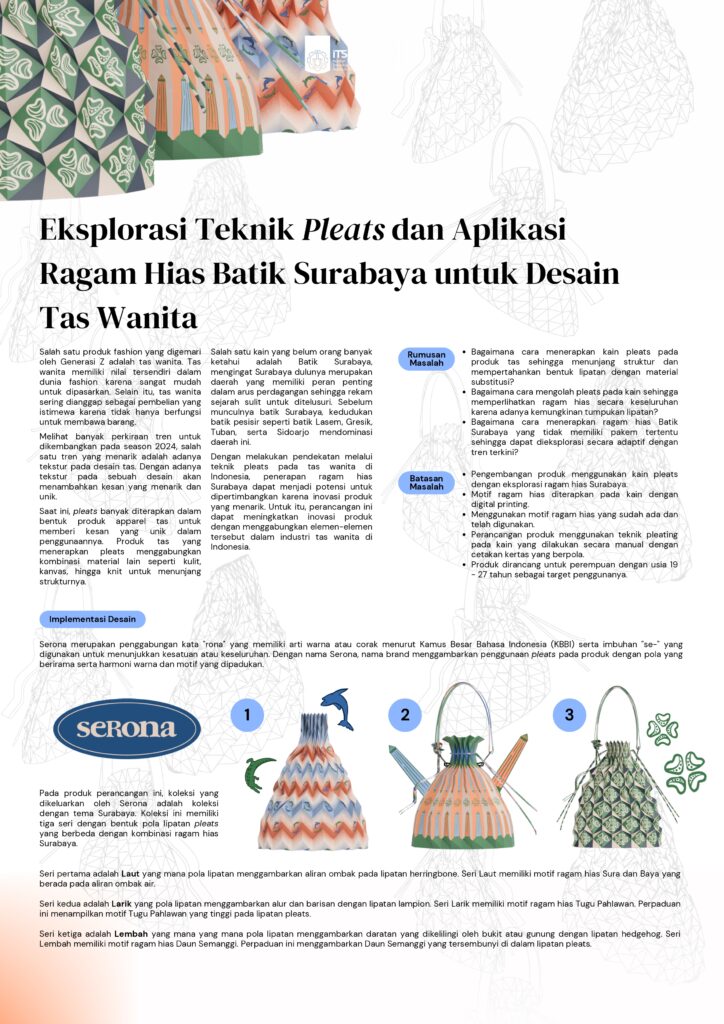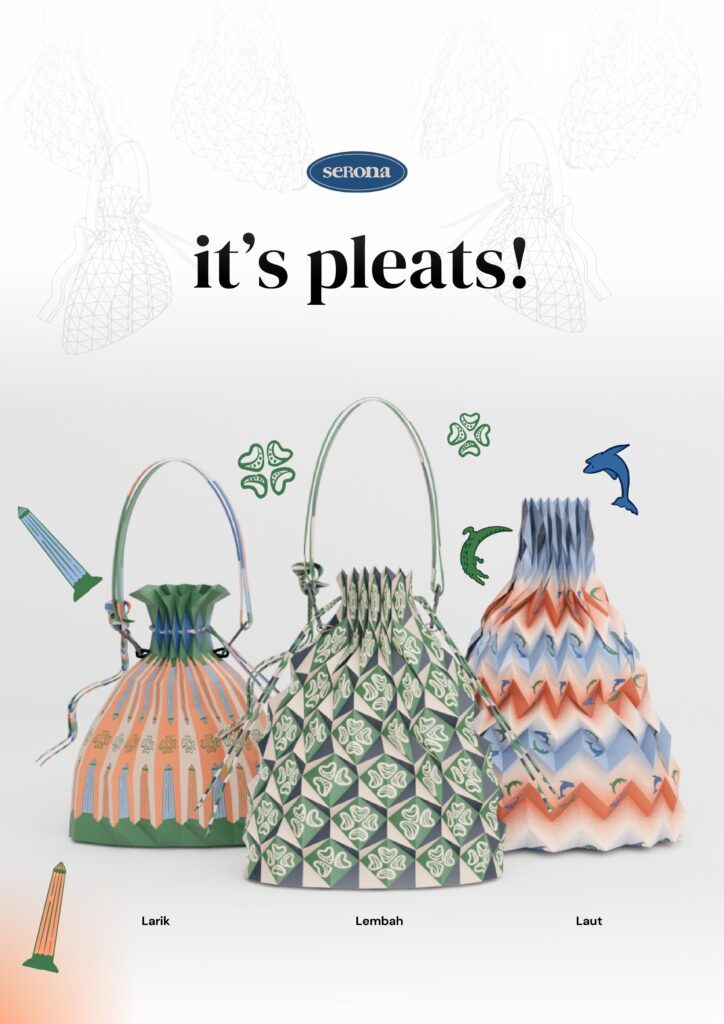Pleats are folds formed on a piece of fabric. Pleated fabric is often referred to as folded fabric or plissé fabric, representing principles such as repetitive lines, patterns, and rhythm generated by differences in texture. Applying pleats to fabric requires a layout arrangement plan, calculating the estimated amount of fabric needed, and detailing the required fold measurements. In this design, pleats are applied to women’s bag products because they hold inherent value in the fashion industry and are easy to market. The application of ornamental motifs from Surabaya is also incorporated into pleated fabric, a modern exploration that will later be printed on the fabric through digital printing. The application of these ornamental motifs can serve as a medium to introduce Surabaya City to the community, especially the younger generation. In this design, understanding the characteristics of the fabric, patterns, and shapes is crucial because pleat patterns exhibit different characteristics when applied to the fabric, which will affect the resilience of the fold memory. For this reason, analysis methods and reviews such as form exploration, patterns, and experiments are considered to adjust the bag’s shape and the motifs that will be printed on the fabric. The application of pleating techniques, both manual and automatic, is also considered to meet the requirements. Heat-pleating techniques are employed in this design because they can be easily adjusted to the fabric used, especially with the use of paper molds that adapt origami folding techniques to create pleat patterns on the fabric. The design will produce a product in the form of a women’s bag by applying pleats technique and Batik Surabaya decorative application.


